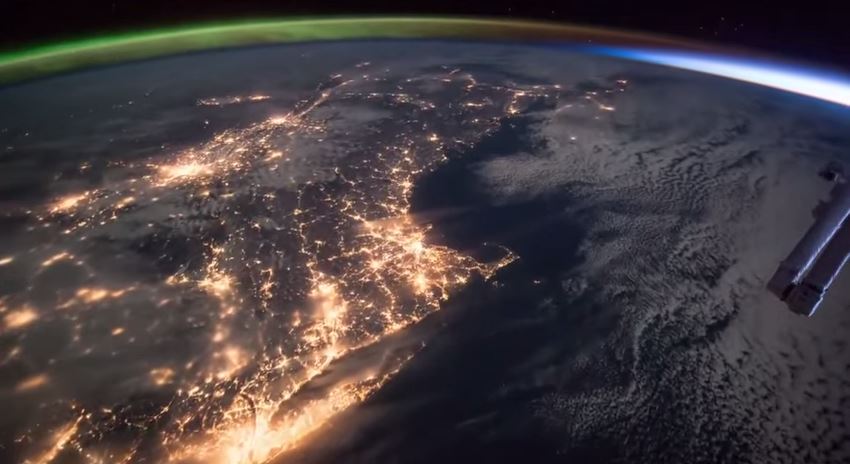Spectacular NASA video footage taken from space showing the Northern Lights (Aurora Borealis) meeting the sunrise over Earth’s horizon has been released.
The video shows the International Space Station (ISS) passing over the United States’ eastern seaboard at night, with the green tint of the Aurora clearly visible.
The dancing lights of the Northern Lights capture the imagination of scientists, NASA says, who study incoming energy particles that come from the Sun.
One effect of such energetic particles are the Northern or Southern Lights, which can speed out of the sun either in a steady stream called the solar wind, or from giant eruptions known as CMEs (coronal mass ejections).

An aurora filmed from the International Space Station with the North American eastern seaboard below. (Image: NASA)
“NASA’s suite of heliophysics spacecraft track how events on the sun affect near-Earth space, including several missions dedicated to aurora studies.”
“Auroras are but one symptom of a larger space weather system in which solar material and radiation can affect Earth’s own magnetic environment and block radio communications, disturb onboard satellite computers, or – at their worst – cause electrical surges in power grids.”
Aurora Borealis and Aurora Australis
Aurora Borealis only occur in the northern hemisphere, and are known as the Northern Lights, while Aurora Autralis occur in the southern hemisphere and are called the Southern Lights. They are the same things, the different names just tell us where they take place.
Auroras are caused by charged particles, mainly electrons and protons, which enter the atmosphere from space, causing ionization and excitation of atmospheric constituents, and consequent optical emission.
The vast majority of auroras occur in the auroral zone, which is typically 3° to 6° in latitude and between 3° to 6 between 10° and 20° from the geomagnetic poles. They are seen more clearly at night.
Other planets also have auroras, and like earth, they are visible close to their magnetic poles.
NASA Video – Aurora Borealis taken from space

